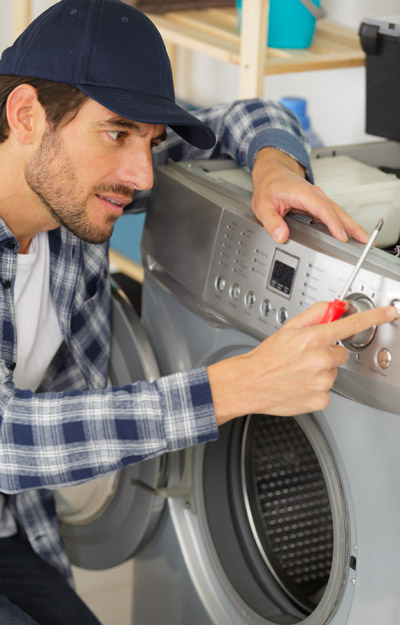Make sure you haven't got the discount earlier.

Why Your Dehumidifier is Blowing Hot Air
It's completely normal for your dehumidifier to blow warm air, due to how parts like the compressor, evaporator and condenser coils, and fan, work together to reduce humidity in the air. However, if the air is too hot, we'll explain how you can fix and prevent it from happening. If your dehumidifier is overheating your room, you can start by checking your room's temperature and the dehumidifier's water bucket, and ensuring the appliance has proper airflow and ventilation. We'll explain your dehumidifier's key parts, and provide tips for efficient performance and maintaining a comfortable living space.
Are Dehumidifiers Supposed to Blow Hot Air?
The short and simple answer is yes, dehumidifiers are designed to blow air into your home that can be slightly warmer than your room's ambient temperature, which may somewhat increase the overall temperature and make it feel warmer. A dehumidifier works by pulling moist air over its evaporator coils and cooling it into water droplets. These water droplets are then collected in a bucket that you empty or that drain automatically through a hose. The leftover air is then pulled over the condenser coils, which reheat it and release it back into the room. Dehumidifiers also partly produce heat as a result of their normal operation, but if your dehumidifier is blowing air that's too hot into your home, that's when there's an issue.
Within most dehumidifiers are four key parts that allow it to function, each as important for its operation as the next. These four parts are:
- Compressor: The compressor is the heart of a dehumidifier, as it is what circulates and compresses a liquid and gas called 'refrigerant' throughout the entire system, including the evaporator and condenser coils. Without a compressor, there is no moisture removal or proper heat exchange.
- Evaporator Coils: The evaporator coils are what initially absorb the hot air from your home and cool it down, so the moisture it carries condensates and turns into water droplets that are collected or drained away.
- Condenser Coils: The condenser coils release the heat absorbed by the refrigerant in the evaporator coils, and condense the refrigerant back into a fluid so it can cycle back to the evaporator coils and absorb more heat.
- Fan: The fan in a dehumidifier is responsible for moving air throughout it, which is essential to the air being pulled in, cooled over the evaporator coils, and pushed back out into your home.
How to Prevent a Dehumidifier from Blowing Hot Air
The most likely cause for a dehumidifier to be blowing hot air is that it's overheating and cannot work efficiently. And now that you know how it works and its key parts, there are some fixes you can do right now to prevent your dehumidifier from being overworked and blowing hot air into your home.
Ensure the Water Bucket is Empty
The first thing you can do to stop your dehumidifier from blowing hot air is to ensure it's in 'Dehumidify' mode, instead of 'Fan' mode. This can happen if you have your dehumidifier inadvertently set to fan mode, or after it's removed as much moisture as possible from the air, and its bucket is at full capacity. All you need to do is make sure that the collection bucket is empty, and set it back to 'Dehumidify' instead of 'Fan', and it should resume removing moisture from your living space.
Lower the Room Temperature
If a room is already warm and stuffy, using your dehumidifier may make it even warmer. Ideally, the temperature conditions for a dehumidifier are between 40 and 90 degrees Fahrenheit (5 to 32 degrees Celsius). Exceeding this temperature limit will likely cause your dehumidifier to overheat. This, in turn, will make your home even warmer, decrease your dehumidifier's efficiency, and accelerate wear and tear on its parts, potentially causing refrigerant leaks. To cool the room and lower the heat of the dehumidifier air, consider also using an air conditioner for proper ventilation and air circulation. Using an air conditioner can also lower energy costs, because the cooler the home, the less the dehumidifier needs to work.
Maintain Airflow for Your Dehumidifier
Dehumidifiers need proper ventilation, as any blockage makes them work harder and blow hotter air as a result. Proper airflow ensures that air does not stay in one place and is consistently circulating, which prevents your dehumidifier from overheating. Keep all sides of it clear, and at least one to two feet away from walls for optimal moisture removal performance.
Perform Regular Maintenance
A dirty air filter will restrict airflow, causing your dehumidifier to work harder and potentially overheat removing moisture from the air. Dusty coils also force the dehumidifier to work harder by reducing its ability to effectively absorb and dissipate heat. As well, a dirty dehumidifier overall can also become a breeding ground for bacteria to be dispersed throughout your home, so just like any other appliance, regular maintenance that involves cleaning (or replacing) its filter and coils with a brush or vacuum will ensure it doesn't overheat and blow hot air.
Properly Turn Off Your Dehumidifier
To reduce the wear and tear on your dehumidifier's parts, and prevent issues like compressor problems or refrigerant leaks, turn it off using the power switch instead of unplugging it, to allow it to cool down properly. And because dehumidifiers are known to be highly energy-hungry, turn your dehumidifier off when you're not home or using it to significantly curb energy bills and extend the lifespan of its parts.
Dehumidifier is Running But Not Collecting Water
If you've explored all of the previous options and your dehumidifier is running and still blowing hot air, but not collecting water, it likely has a refrigerant or compressor issue. Refrigerant leaks and compressor failures can occur for several reasons but are normally tied to overheating and overloading of the sealed system. Because repairing a refrigerant leak or compressor failure involves handling specialized tools and toxic refrigerant, we recommend that a professional technician fixes it. Attempting to repair it yourself can be difficult and may lead to further damage to the dehumidifier, or exposure to serious safety hazards. You may even want to explore replacing your dehumidifier if the repair is too costly.
At this point your dehumidifier should be efficiently removing moisture from your home, or you've replaced it and you can enjoy a moisture-reduced home! If you found this article helpful, be sure to check out our other PartSelect.com blog resources, from appliance error code to home improvement guides. You'll find reliable advice with step-by-step instructions to help you with all your home maintenance and appliance repair needs!





























